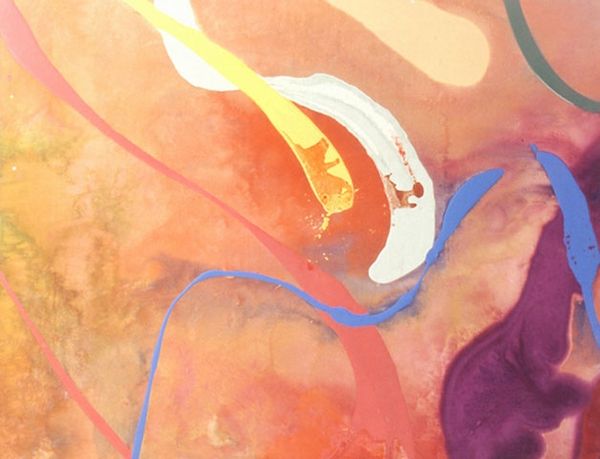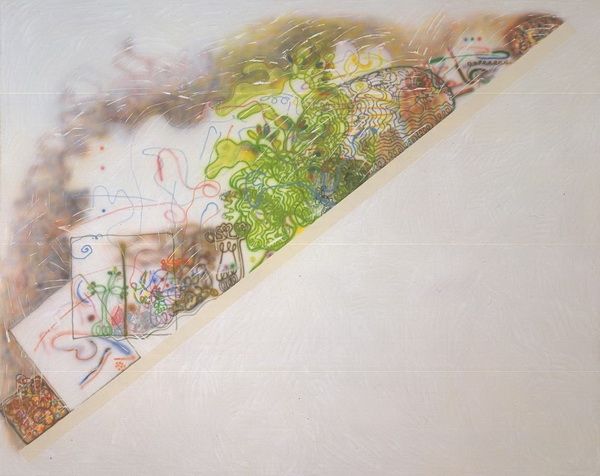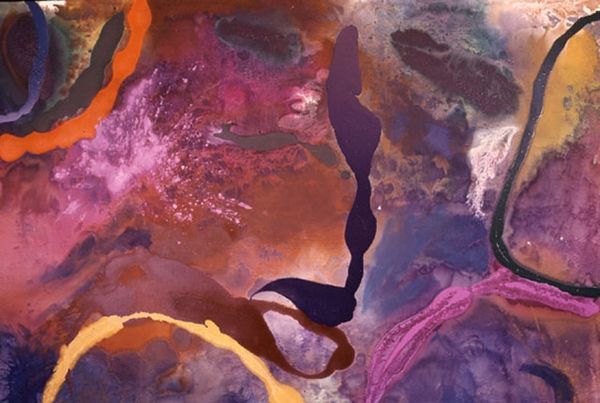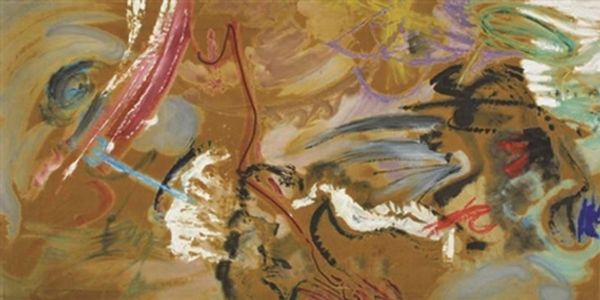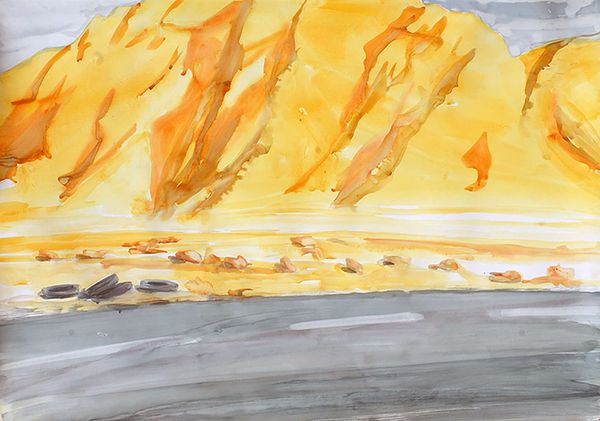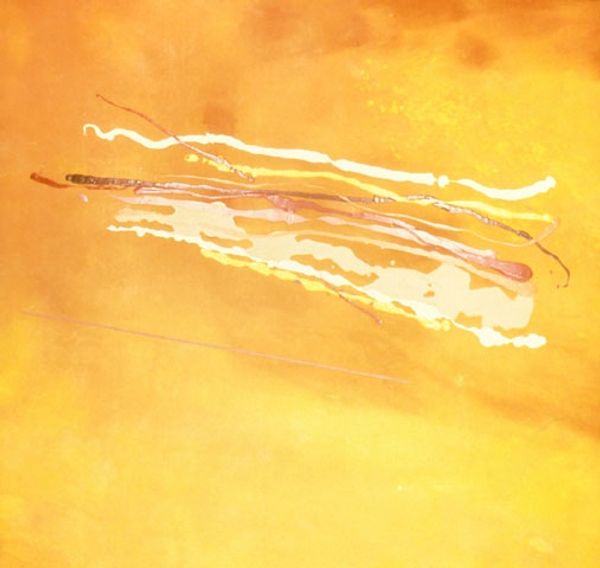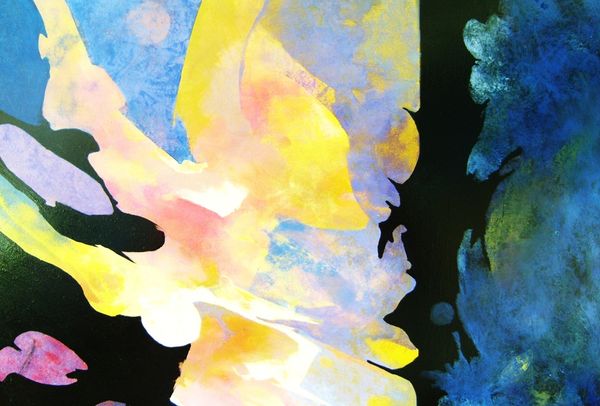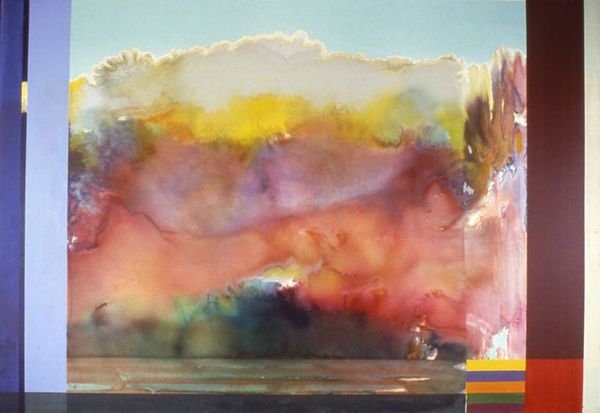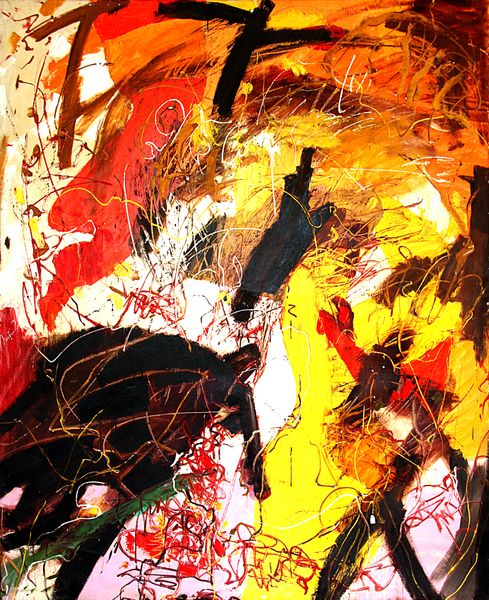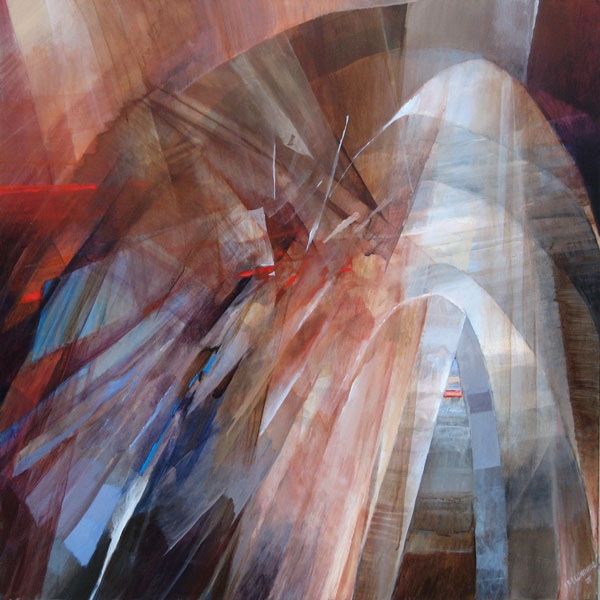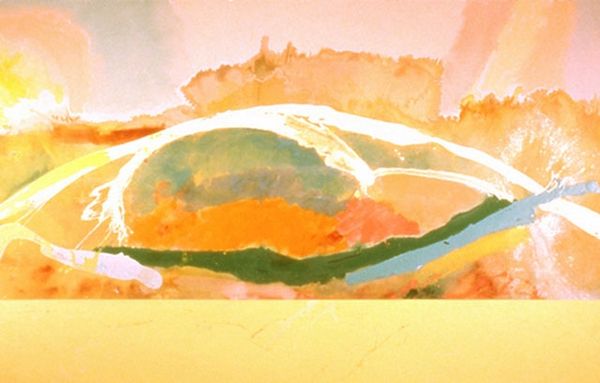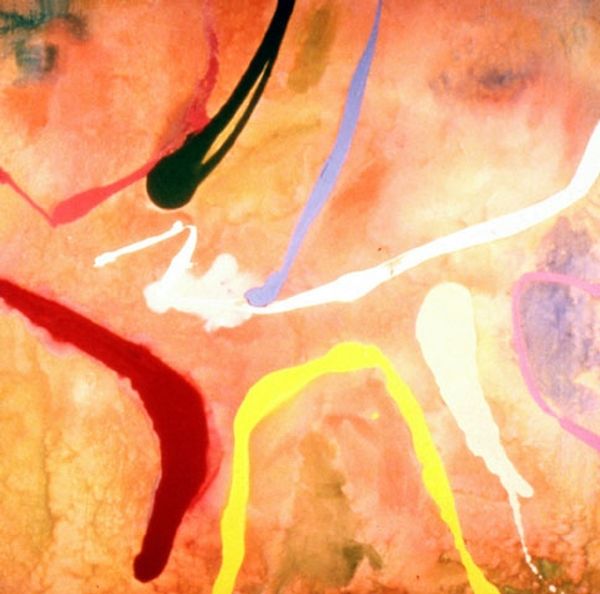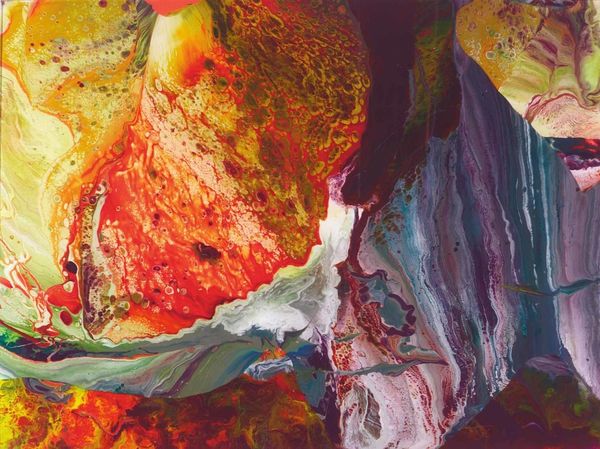
acrylic-paint
#
abstract-expressionism
#
abstract expressionism
#
landscape
#
colour-field-painting
#
acrylic-paint
#
acrylic on canvas
#
abstraction
#
modernism
Copyright: Ronnie Landfield,Fair Use
Editor: So, this is Ronnie Landfield’s "North Country" from 1969. It’s acrylic on canvas, and I immediately notice the way the colors blend and bleed into each other. It’s almost like looking at a watercolor, but on a much larger scale. How do you see this piece through your expert eye? Curator: I see a fascinating interrogation of the relationship between material and image. Landfield is using acrylic, a relatively new material at the time, to evoke the ephemerality and atmospheric effects more commonly associated with watercolors. It challenges our understanding of the labor and the inherent qualities associated with each material. Do you see how he’s flattening the hierarchy between 'high art' painting and more 'craft'-oriented techniques? Editor: Yes, the looseness is unexpected, almost defiant for the medium. The blurring disrupts my assumption about what acrylic *should* look like. Are there particular aspects of Landfield's technique or materials that highlight these themes further? Curator: Precisely! Note how he avoids traditional brushstrokes in favour of pouring and staining the canvas. He’s manipulating the viscosity of the paint and surrendering a degree of control to gravity and chance. In doing so, Landfield is highlighting the material's inherent properties rather than imposing a pre-conceived image upon it. It questions artistic intent and production. How do you think this blurring of intention impacts the work? Editor: It's liberating. It seems like the painting is actively creating itself. Thinking about process makes me wonder about his studio and working conditions. What were artists thinking about labor at this point in history? Curator: Exactly! And don't forget this was happening during a period of significant social upheaval, with increased awareness of labour practices and the means of production in various industries, inspiring art makers to be critical of how and why they produce artworks. Editor: I hadn't considered that, but it's true! The painting becomes less about a subject and more about the conditions that brought it into being. Thanks, that really shifted my perspective. Curator: And you prompted me to consider how the very *act* of observing asks the viewer to become involved in production by imposing narrative on what is otherwise non-representational. It makes me think that maybe all artwork, even abstraction, relies on both maker and audience for ultimate meaning.
Comments
No comments
Be the first to comment and join the conversation on the ultimate creative platform.
